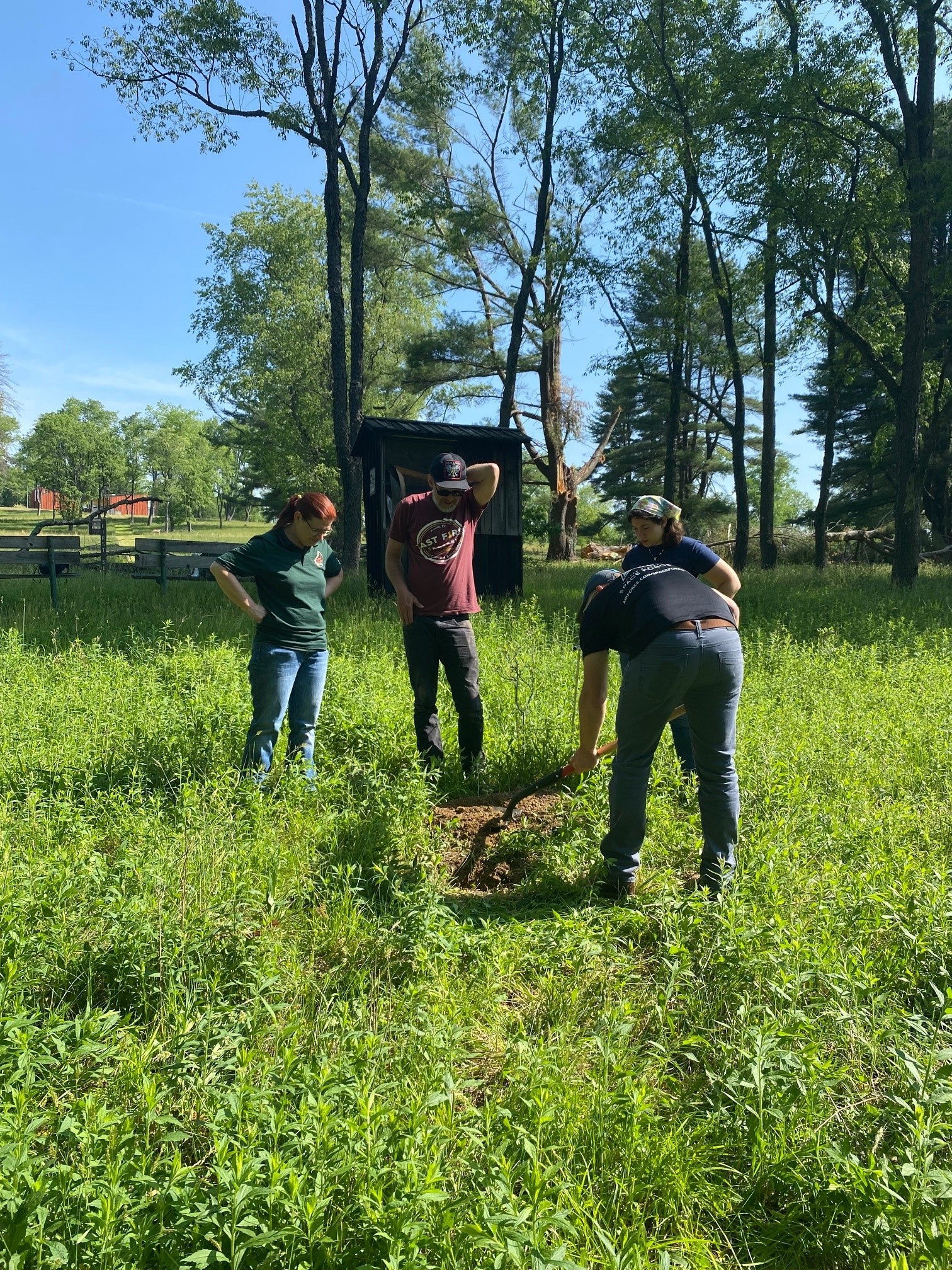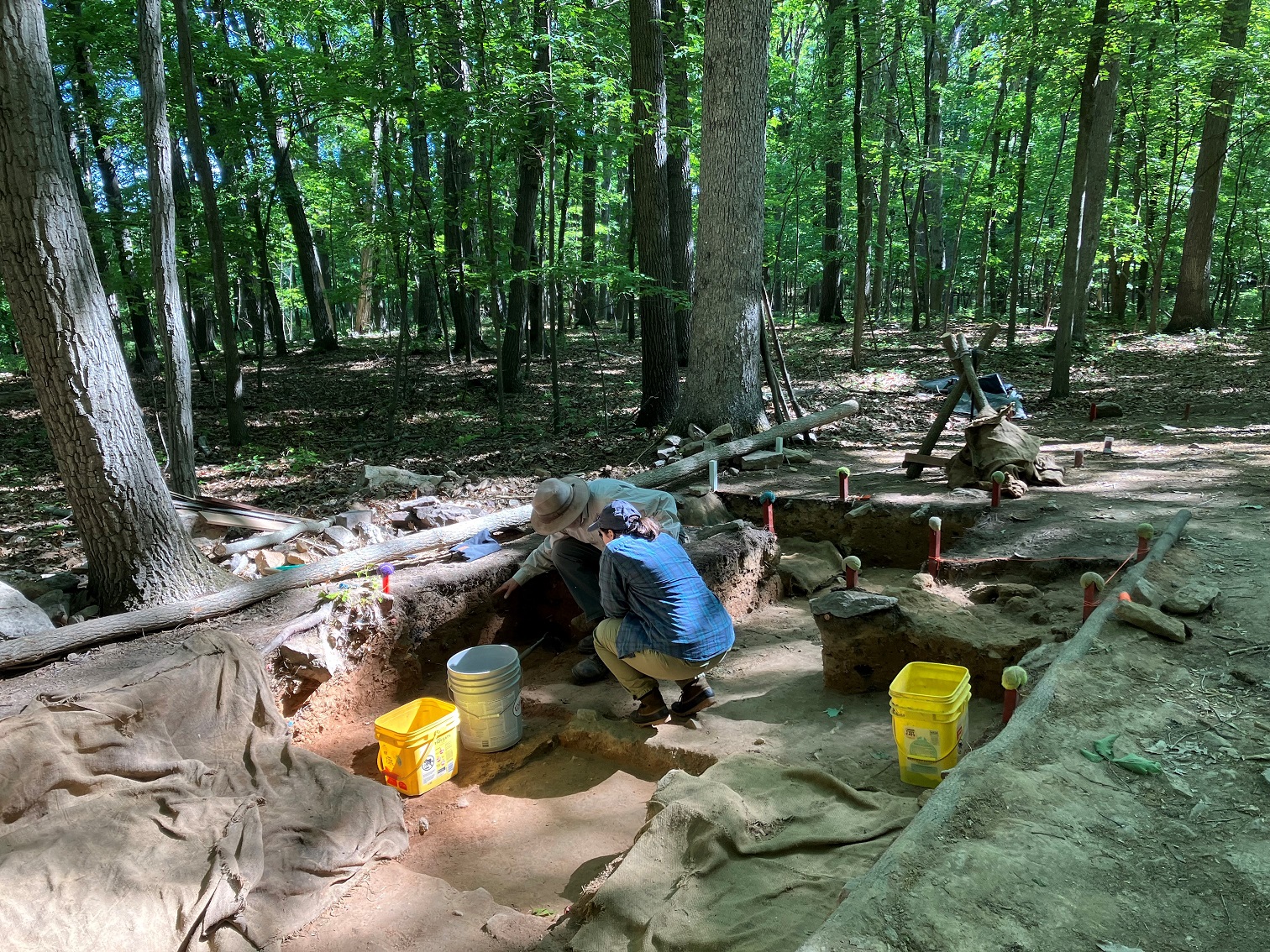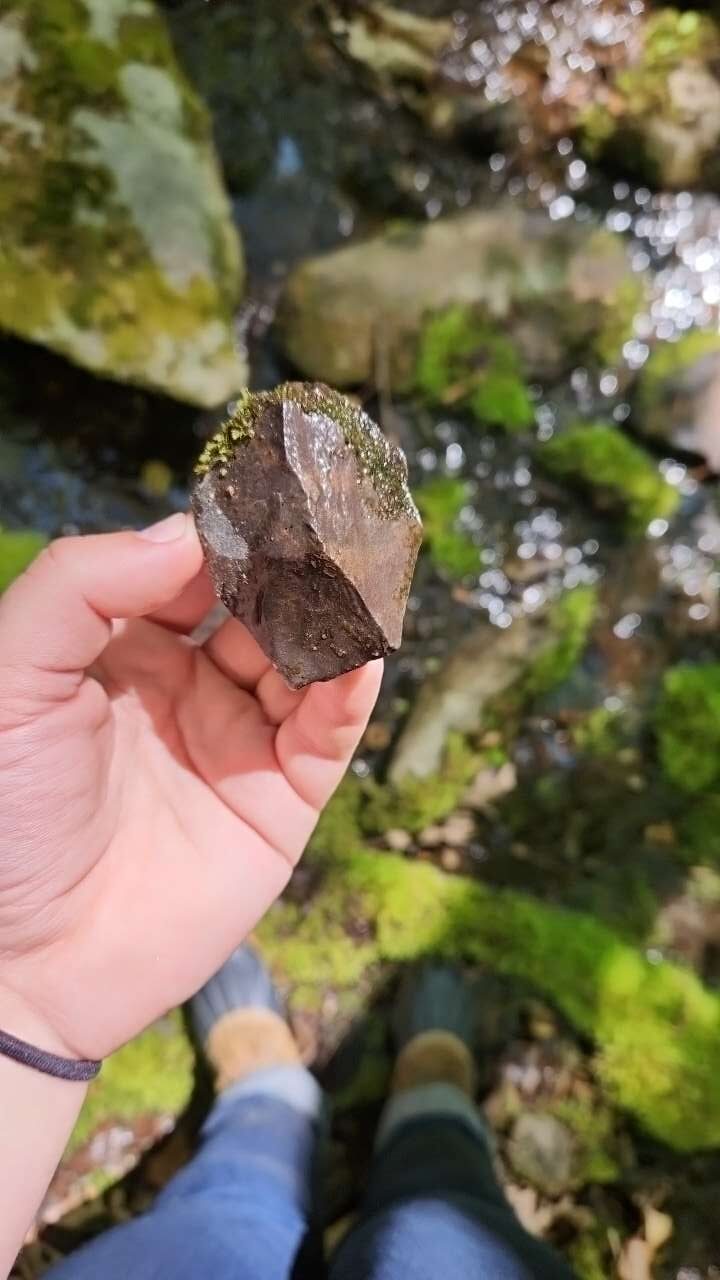As I look back at my time here at the PA SHPO, I realized how much new knowledge and experience I have gained. Prior to this internship, I had very little experience in the world of preservation, especially when it came to the bureaucratic level. This internship allowed me to jump into the world of archaeology here at the PA State Historic Preservation Office.
I expected to learn a lot about in-office work, however, I was also given the opportunity to join PA SHPO staff on multiple trips during my time here. This allowed me to see a myriad of different archaeological sites and experience how site survey is done.
I was also able to interact with many different people during my trips. I saw how we can communicate effectively with people within our branch of work and collaborate with those outside our field.
For one of my biggest trips, we made our way west to attend the Allegheny National Forest and PA SHPO annual meeting. At this meeting I was able to see how the PA SHPO and the Forest Service collaborated. After the meeting, some of the rangers took us to see some of the sites that are within Allegheny National Forest.
We also visited a PennDOT project being conducted in St. Mary’s, PA. This site was interesting to me because I was able to see a cultural resource management project in action.
The last day of our trip is when we visited historic Pithole City, an oil boomtown in Venango County known for its sudden boom in population as well as its sudden abandonment. We were able to walk the grounds and conduct a small survey in one of the depressions in the ground where a building used to be. I had never heard of Pithole City, so being able to visit the grounds and learn about the history was extremely interesting.

Pithole City volunteer Vicki Gilson, PA SHPO archaeologists Casey Hanson and Justin McKeel, and PA SHPO intern Rhiannon Flaig conducting primarily investigations at Pithole City.
Some of my trips were shorter day trips, yet they were no less exciting. One of these day trips I visited the Shoop Site (36AD0020), which is a Paleoindian site. There I was able to learn how to identify chips and flakes of Onondaga chert, which I had never done before.
I was also able to work with and learn from former state archaeologist Kurt Carr, who discussed his extensive experience from working on the Shoop Site.

Rhiannon Flaig and Kurt Carr looking at the stratigraphy of a wall at the Shoop Site (36DA0020).
One of my favorite day trips was a site recording trip we took in Michaux State Forest. Here I was able to see an excavated Rhyolite quarry that a local university had been working on. I was also able to utilize the Surveyor 123 app to record an all-new site found near the quarry. I had never gone to a site like this one before, so it was truly amazing when we found artifacts in the area.
After we got back from the trip, I submitted the data to surveyor and transferred it into PA-SHARE. From there I submitted the form, and the site was given a name and a number. I enjoyed being able to be a part of surveying, recording, and creating an archaeological site from start to finish.

An artifact found at the site in Michaux State Forest.
When I wasn’t on site visits, I was doing work in the office. One of the tasks I had was entering site information submitted by avocational archaeologists and members of the public into PA-SHARE. I thoroughly enjoyed combing through the information given and organizing it into PA-SHARE.
While doing the site creation, I had to identify artifacts from the pictures people sent in. I previously had little experience in pre-contact archaeology and was nervous when I was tasked with identifying various projectile points. However, I ended up learning more about lithics than I expected. The more I identified, the easier it was.
One of my larger office tasks I was given was to read through the Society for Pennsylvania Archaeology’s Pennsylvania Archaeologist journals and find/update sites that were covered in the journal. It has been valuable to take a step into the worldview of archaeology throughout the years and watch it grow and evolve over time.
In 1930, when the journals first began publication, the records of archaeology were a bit lacking, so I did a lot of detective work while trying to find sites in PA-SHARE. I also was able to see how archaeology was conducted in the past, and how the actions of past archaeologists affect how we conduct archaeology today.

Pennsylvania Archaeologist 1934 Volume 4, Number 3 cover page.
My last project I began was updating records in PA-SHARE that have missing artifact information. There are many records where the artifacts did not get transferred from the old, paper PASS forms into the digital PA-SHARE record. It is beneficial to have the artifacts listed in the digital record as this allows them to be queried in PA-SHARE enabling users to answer specific research questions.
This project will exceed my time here at the PA SHPO, but I am glad to have aided in the effort to keep archaeological site information as accurate as possible.
This week’s guest contributor is Rhiannon Flaig. Rhiannon joined PA SHPO this summer as one of PHMC’s Keystone interns. She is studying archaeology at Millersville University and we wish her luck as she enters her senior year. Thanks for all your hard work!
Comment Policy
PHMC welcomes and encourages topic-related comments on this blog. PHMC reserves the right to remove comments that in PHMC’s discretion do not follow participation guidelines.
Commenters and Comments shall be related to the blog post topic and respectful of others who use this site.
Commenters and Comments shall not: use language that is offensive, inflammatory or provocative (this includes, but is not limited to, using profanity, obscene, or vulgar comments); disparage other commenters or people; condone illegal activity; identify the location of known or suspected archeological sites; post personal information in comments such as addresses, phone numbers, e-mail addresses or other contact details, which may relate to you or other individuals; impersonate or falsely claim to represent a person or an organization; make any commercial endorsement or promotion of any product, service or publication.
If you would like to comment on other topics not related to this blog post but related to PHMC, please fill out the PHMC Contact Us Form.

This was a very interesting read. I wish Rhiannon all the best in her future.
An excellent, in-depth article. Congratulations to Rhiannon Flaig for her hard work and knowledge.
Casey,
Nicely done presentation. You are building a great program at BHP and I look forward to reading more about the program as it develops.